Hoofed Animals
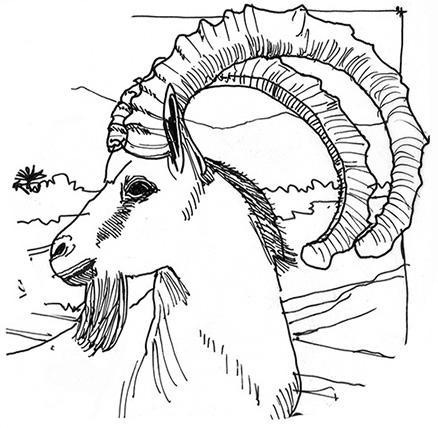
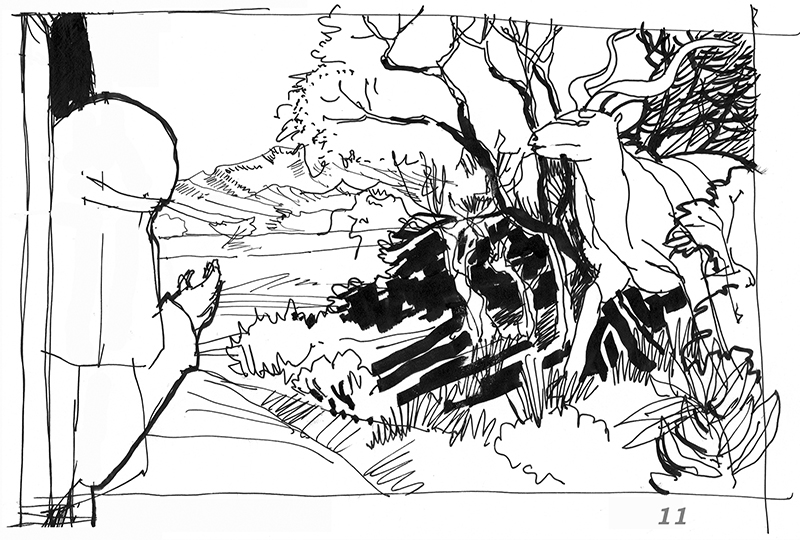
Hoofed Animals in zoos have not received the same amount of published welfare and enrichment studies as primates, large carnivores or elephants but are no less deserving of such attention. Zoo management of hoofed animals seems to derive extensively from management of domesticated farm animals but would benefit from increased consideration of species-typical wild behaviour.
Papers on Hoofed Animals
Coe, Jon C., 1986. “The African Savannah Exhibit at Woodland Park Zoo” in International Zoo Yearbook, 24/25: 332-339.
Notable Hoofed Animal Exhibits
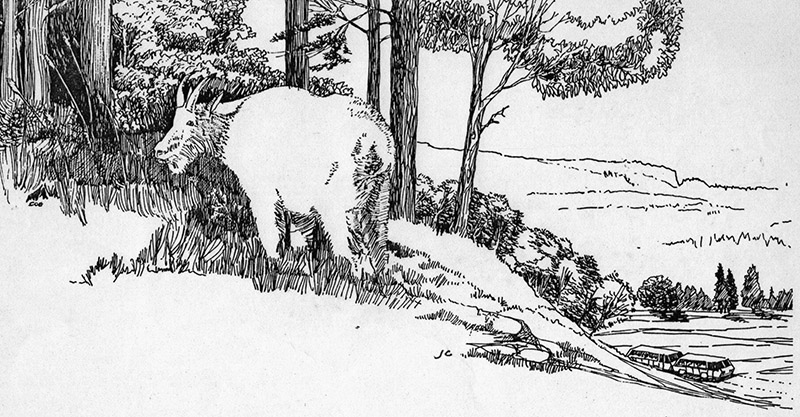
Northwest Trek
Jon’s 1975 sketch for the Northwest Trek Master Plan
This native animal park in the scenic foothills of Mt Rainier, Washington, USA, was Jon’s very first zoo planning and design project in 1974 with Grant Jones and the firm of Jones & Jones. Dr and Ms David Hellier first developed this three-square kilometre (723-acre) property and in 1971 granted it to Metro-Parks Tacoma (which also manages Point Deviance Zoo and Aquarium) to develop as a natural attraction. Native American hoofed animals including moose, wapiti (elk) mule deer, bison bighorn sheep and mountain goat roamed freely over most of the site. Grant and I began by locating where each species preferred to spend their time, moose in the swamp, bison on the open grasslands and mountain goat on the ridges. Then we located a highly scenic tram roadway connecting all these sites. We also developed a 0.8 sqm (2-acre) area for black bear and wolves. Inspired by exhibits at the Arizona Sonora Desert Museum, I also designed small exhibits for beaver, racoon, wolverine, and other small mammals which I now realize were far too small. The project was designed on site, rather than in the studio, using strings and tapes to establish the entry road and car parks, and stakes to accurately locate the tram tour road through the open range area.
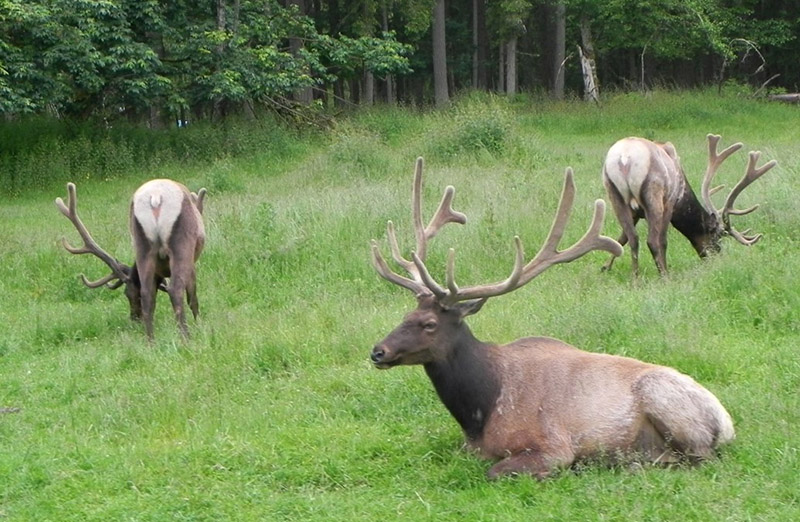
Wapiti (North American elk) seem from the propane powered tram. Nearly fifty years after Jon’s and Grant’s planning, this remains one of the most beautiful and natural animal displays in the world.
- North American Plains and Forest, Northwest Trek, Eatonville, Washington, 1976, J&J
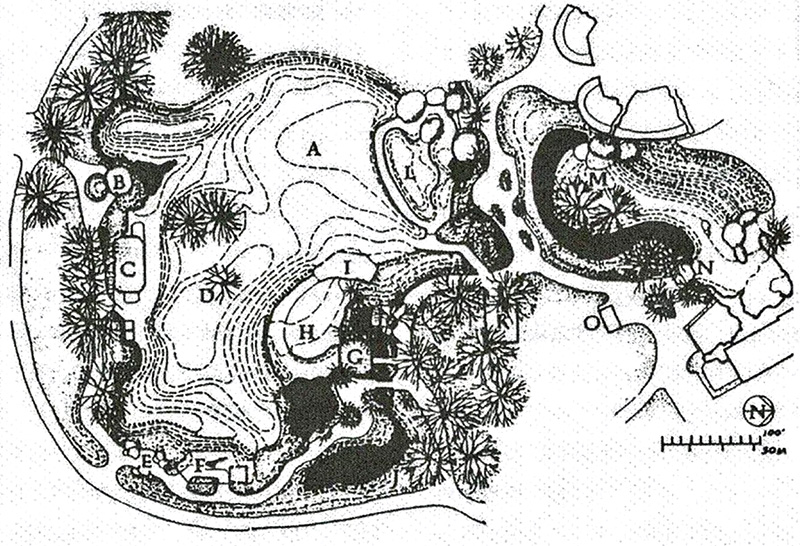
African Savanna Exhibit at Woodland Park Zoo
African Savanna plan. A. and D. giraffe, zebra, klipspringer habitat. B. African Village overlook. C. Underground zebra and antelope holding building. E. Visitor overlook. F. Weaver Bird aviary. G. Buried hippo holding. H. Hippo exhibit. I. Marsh. K. Giraffe holding building. L. Patas monkey exhibit. M. Lion rocks. N. Lion viewing shelter.
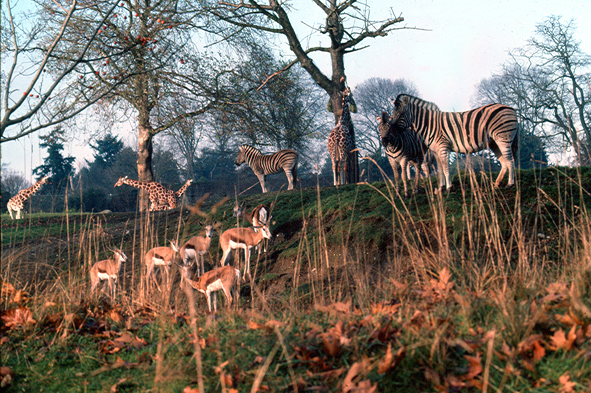
This mixed-species savanna habitat recreation includes zebra, klipspringer antelope and giraffe. Adjacent exhibits seen with the open savanna area as their backdrop included weaver birds, hippos, marsh waterfowl, and patas monkeys, with lions nearby. Innovations included elevating the central hoofed animal area with earth from excavating hidden dry moat barriers, so that the ground on which animals move is higher than visitor eye-level. This creates a horizontal skyline and obscures visitors on the other side. Jon carefully designed “cones of vision” (areas visible from specific viewing areas) to reveal the themed landscape one stage at a time. After circling the central exhibit area some visitors thought they had seen fifteen giraffes. They had seen the same three giraffes from five different viewpoints.
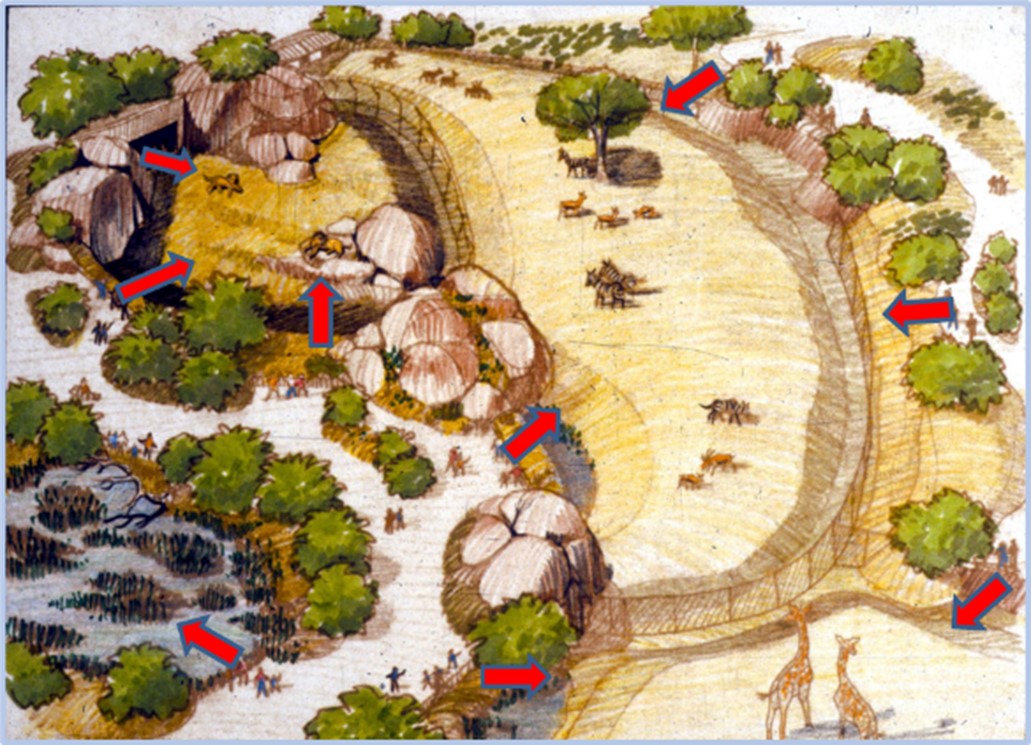
This sketch illustrates an African savanna exhibit complex modeled after the Woodland Park Zoo exhibit showing the arrangement of visitor viewpoints integrating the hoofed animals into a complex theme landscape including other species.
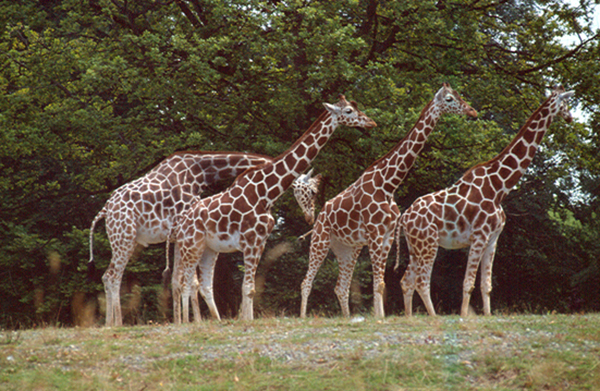
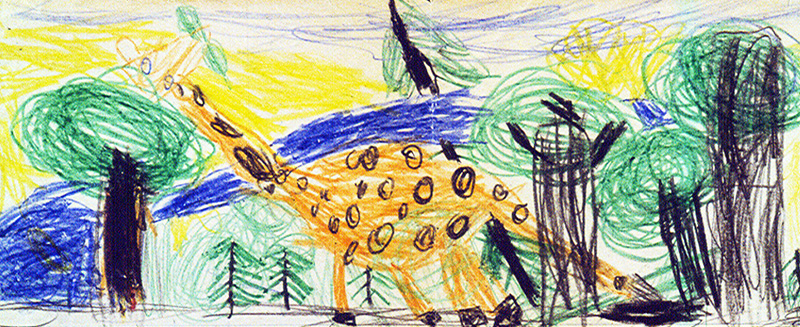
This image was drawn from memory by a six-year-old school child the day following a class visit to the Woodland Park Zoo African Savanna Exhibit, demonstrating the powerful visual impression this zoo experience had on the child.
- African Savanna, Woodland Park Zoo, Seattle, Washington, 1978, J&J
- Giraffe Exhibit, Pittsburgh Zoo, Pennsylvania, 1981, J&J

African Savanna at Pittsburgh Zoo
A classic immersion design, this display complex includes lion, zebra, antelope, elephant and giraffe. Hidden barriers and a winding savanna river separate animal areas yet provide visitors with multi-species panoramas. “Borrowed landscape” from surrounding parklands gives the impression of great expanse.
Jon was principal designer with Gary Lee, both then Principals with Jones & Jones, Seattle, Washington. Landscape architects Becca Hanson and David Roberts completed the Jones & Jones team. The team were consultants to Pittsburgh based GWSM, Landscape Architects with Project Manager Jim Pashek. Pittsburgh Park Department Architect Todd Meyer and Zoo Director Howard Hayes made important contributions to this excellent project.
- African Savanna Exhibit, Pittsburgh Zoo, Pennsylvania, 1981, J&J
- Habitat Africa! (Giraffe Exhibit), Brookfield Zoo, Chicago, Illinois, 1990, CLR
- Malayan Tapir Exhibit, Bronx Zoo, New York, 1990, CLR
- Mountain Goat Exhibit, Woodland Park Zoo, Seattle, Washington, 1995, CLR
- Wapiti Exhibit, Woodland Park Zoo, Seattle, Washington, 1995, CLR
- Islands (tapir, Babirusa) Louisville Zoo, Kentucky, 1996, CLR
- Takin Management Study, Takin Wildlife Preserve, Sichuan, China, 2008, JCD